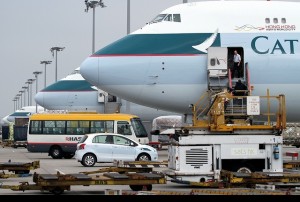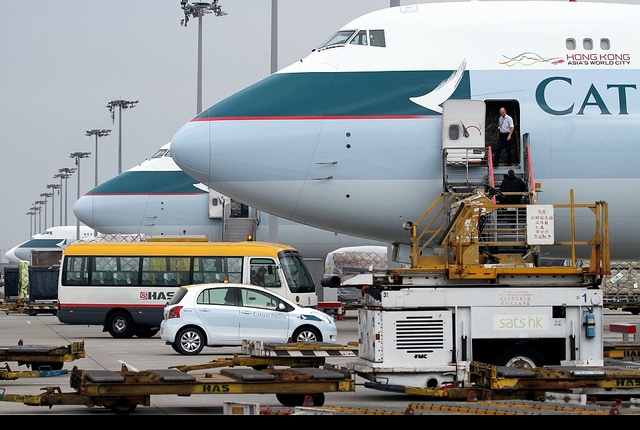 March saw global airfreight volumes recording slower growth, rising 1.4% year-over-year, according to the latest statistics from Airports Council International (ACI) World.
March saw global airfreight volumes recording slower growth, rising 1.4% year-over-year, according to the latest statistics from Airports Council International (ACI) World.
The tapered growth comes after a strong February that was bolstered by the Lunar New Year and the modal shift towards air transport resulting from congestion at sea ports along the western coast of the United States.
For the first quarter, however, the industry logged an overall increase of 4.7% in cargo demand year-over-year.
Meanwhile, global passenger traffic was more vigorous, increasing by 7% in March as compared to the previous year and by over 6% in the first quarter of 2015. International passenger traffic grew by 6.8% year-over-year, whereas domestic traffic grew by 5.7% for the period from January to March 2015.
Air cargo growth rates across the globe were mixed in March. Although North America has maintained a solid growth rate of 5.7% year-over-year in March, results were mixed at the sub-regional level. Memphis and Louisville, two of North America’s largest airfreight hubs, were in decline by 2% and 0.4%, respectively, while West Coast and Midwest airports posted solid gains.
Chicago, Los Angeles, and Anchorage had huge jumps of 32.9%, 14.5%, and 12.8%, respectively, for the month. Both Asia-Pacific and Europe saw a decline of 1.4% and 1.9%, respectively. Hong Kong, the world’s largest airfreight hub, declined by 8.2% in March.
In passenger traffic, all regions reported gains, but much of the buoyant activity stemmed from the Asia-Pacific and Middle East regions, with respective gains of 11.1% and 10% in passenger traffic in March. Many of the busiest airports in the Asia-Pacific region posted double-digit growth in the first quarter. Shanghai, Incheon, Bangkok, and New Delhi increased by 17.7%, 15.6%, 14.8%, and 13% respectively. Abu Dhabi and Doha, two of the fastest growing airports in the Middle East, grew by 21.1% and 16.8%, respectively. Much of the growth, particularly in the Asia-Pacific region, stems from the remnants of leisure travel during the February Lunar New Year.
“The first quarter was largely distorted by external shocks which affected demand,” said ACI World economics director Rafael Echevarne. “In spite of these distortions, we still witness overall solid growth in both passenger and airfreight traffic over the period.”
Looking ahead, he said the aviation sector is on an uncertain course. “After removing all of the noise, we have yet to see the impact that the global business cycle will have on air transport demand. There are two forces at play that are working in opposite directions. On the one hand, we see improved economic conditions in the United States. On the other hand, with a Chinese slowdown and the continued uncertainty in Europe, the net effect on air transport remains to be seen.”
Photo: Christian Junker





